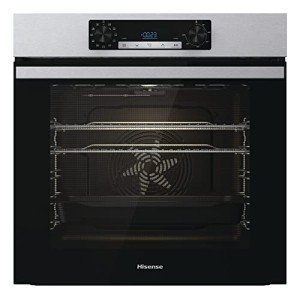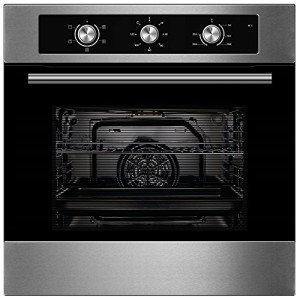What's The Job Market For Single Oven Electric Fan Professionals Like?
페이지 정보

본문
 What Is a Single Oven Electric Fan?
What Is a Single Oven Electric Fan?Single oven electric fan is a type of kitchen appliance that utilizes an internal fan to distribute hot air evenly throughout the oven cavity. This can remove hot spots and enhance the overall cooking performance.
Does your oven have fans? If so, does this make certain areas of the oven more hot or colder than others for a specific temperature?
Functions
Oven functions, also referred as cooking modes or settings, offer a variety of oven settings that are pre-programmed to meet a variety of cooking recipes and requirements. These features regulate the operation of the heating elements and the fan in the oven, which allows for more precise and consistent results.
Most ovens are what's known as 'fan assisted' which means at the same time as the oven element heats, there is an air conditioner that circulates hot air throughout the oven's cavity, helping in cooking food. This reduces the preheating time and ensures an even cooking. There are normally two fans inside an oven; the one that distributes the hot air to help cook and a cooling fan which is controlled by a thermal switch and turns on automatically when the thermostat knob is set at anything other than off.
Functionality to make life easier
Ovens come with a variety of features that make it simpler to use them, like the defrost function that uses low temperatures to thaw frozen food without cooking it. This speeds up the defrosting and prevents food from drying out or becoming partially cooked. The reheating function is also extremely beneficial, since it uses a gentle heating method to heat food. This helps preserve the taste and texture of the food.
A child lock feature locks the control panel to block children from altering the settings or getting access. The minute minder feature is another useful feature that can be used without regard to the cooking functions. It switches off the oven when a certain amount of time has been passed. This allows you to avoid omitting to turn off the oven.
For those who love cooking a variety of different dishes frequently an oven that has multiple functions is a great choice. A fan oven that has a roast function lets you cook a variety of vegetables and meats simultaneously on several racks, making it perfect for Sunday lunches or meals with the whole family. There are also grill and bake functions that can be great for adding an attractive golden top to casseroles, potatoes and cakes.
Design
Built-in electric single oven and hob ovens are available in a variety of sizes and styles that can meet your kitchen's needs. Some models also have additional features such as self-cleaning, delay start and warm hold. These functions can be a great way to reduce time and effort in your kitchen. Read reviews to get an idea of how these ovens are evaluated by other consumers.
A fan oven comes with a built-in air conditioner to circulate air around the food for Single Oven Electric Fan faster, more uniform results than an ordinary oven. This is especially beneficial for cooking dishes with high fat content such as roasts and pies. The control panel will tell you if the oven is a fan-model. Look for a three-pronged fan icon that is surrounded by an elongated circle. Conventional ovens may be marked differently or lack a fan at all.
Blomberg's A-rated integrated single electric oven single oven has a large capacity of 71L and is built for performance and appearance. The oven has a range of settings that include grill and fan assisted cookery. It also comes with a light-only setting to make cleaning easy. It also has a touch-control programmable clock/timer and an easy to clean enamel interior.
Energy Efficiency
As household appliances go the oven is a minor contributor in terms of overall electricity consumption compared with devices such as refrigerators and air conditioners. The type of oven used and the method of cooking used can still have an impact on energy costs. Many of the newer single ovens are more energy efficient than older models. This reduces energy consumption and helps you save money on your energy bills.
The main difference between a conventional and a fan oven is that a traditional oven is only one heating element, while the fan oven includes heating elements and a fan to circulate hot air around the food. Using a fan means you can bake at lower temperatures, which also reduces energy use. A fan can also to reduce the baking time.
Another method to ensure you're getting an oven electric fan that is as efficient as it can be is to search for one that has a brushless DC motor. This motor technology is more efficient than older models that aren't brushless. It also reduces noise levels.
In addition to the wattage rating, you'll want to be aware of the energy rating, which should be displayed on the appliance or in the manual. This number will provide you with an idea of the amount of energy the oven uses when in operation. You can then compare the cost per kWh to the electricity tariff in your area. It will vary depending on where you reside.
The type of food that you cook and the temperature you set, as well as the amount of time you cook it can all affect how much electricity your oven consumes. The cooking process itself can affect how much electricity it consumes and so will heating the oven prior to using it.
To maximize your oven's energy efficiency, be sure to shut it off when you're finished with it and monitor the amount of energy you use. You can also make use of a smart meter in order to obtain accurate information about how much your appliances are costing you and consider other cooking methods that consume less electricity.
Installation
If you're installing a new electric fan oven for the first time or replacing an existing one, there are certain costs to be considered. The costs can range from disposing of an old appliance to installing or upgrading utilities and outlets. You may also have to install vent hoods if the new unit requires it. Look around for the best deal.
It's easy to tell if your new oven has a fan since it's likely to be identified as such on the control panel. The fact that it's equipped with an air conditioner means that the air circulates constantly within the oven's chamber, which allows it to heat up quicker and spread heat evenly. Conventional ovens may have different symbols on the control panel or no fan icon at all.
You should look at the wiring of your old unit before you hire an electrician. If the old one plugs in directly to the power socket it is likely to be easy for a professional to connect it into your wiring system. However, if the older oven was wired directly to your circuit breaker or switchbox, it's more difficult. If the new model has higher in watts than the previous, you'll need to make sure that your circuit breakers are able to handle the extra current. It is also important to make sure that any cables you use are of sufficient size.
Installation costs can also differ based on the location of your kitchen in your home. A freestanding single oven oven that is able to be easily moved from room to room is cheaper than a wall-mounted oven that requires cutting into cabinets or countertops to put in. Additional costs could be incurred if you have to run or add gas or electrical lines or ventilation ductwork.
An easy installation of an electric oven is expected to cost between $70 to $155 if you are replacing an existing oven in the same location. Installing an exhaust hood, and then adding a new outlet in the kitchen will cost about $300.

- 이전글Your Family Will Be Grateful For Having This Car Key Repairs 25.05.20
- 다음글What Is It That Makes Railroad Settlement So Popular? 25.05.20
댓글목록
등록된 댓글이 없습니다.



